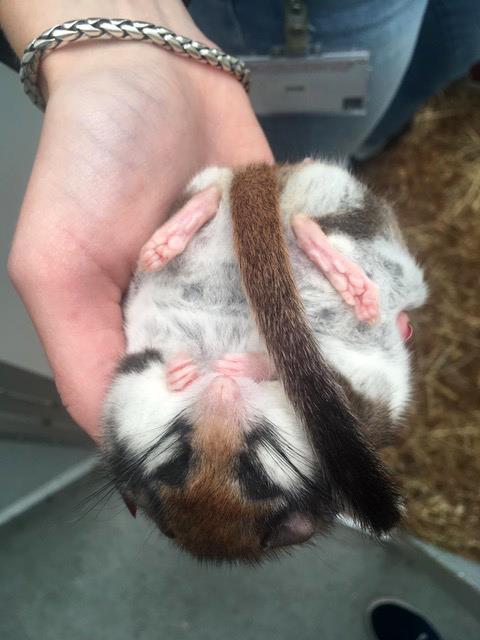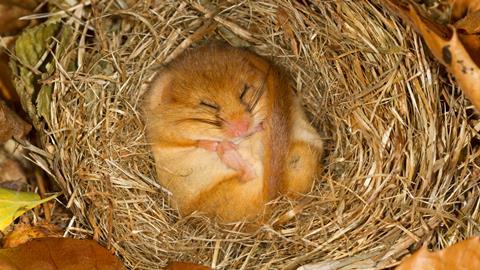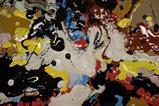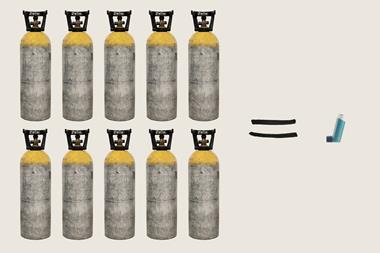With many different species entering torpor for a variety of reasons, scientists are looking to their sleepy secrets for ways to treat human diseases. Anthony King reports
-
Hibernation as a medical blueprint: Scientists are studying hibernating animals like squirrels, bears, and lemurs to uncover biological mechanisms that could inspire treatments for human diseases such as Alzheimer’s, heart disease, and kidney failure. These animals exhibit extreme metabolic suppression and recovery, offering insights into resilience and repair.
-
Drug discovery and gene therapy: Startups like Fauna Bio and Sulfateq are leveraging hibernation biology to develop therapies. Fauna Bio uses AI and gene expression data from hibernators to identify drug targets, while Sulfateq is advancing small molecules that protect mitochondria, with potential applications in neurodegeneration and organ failure.
-
Muscle and metabolic preservation: Brown bears and ground squirrels maintain muscle mass and manage insulin sensitivity during hibernation, offering models for combating muscle wasting and metabolic disorders like type 2 diabetes. Bear serum has even shown promise in promoting human muscle cell growth in lab tests.
-
Broader implications and future potential: Hibernation research may lead to breakthroughs in cancer treatment, radiation protection and obesity management. The key lies not in unique genes, but in how common mammalian genes are expressed differently – suggesting that humans might one day harness similar protective states.
This summary was generated by AI and checked by a human editor
In his lab, pharmacologist Rob Henning delights in the feats of hibernating mammals. The garden dormouse exits hibernation quickly, rising from 4°C to 37°C in about two or three hours. Henning has a trick that allows him to take advantage of this and multitask while working in his lab. ‘Usually you take two of them, put them in your trouser pocket and you walk around. At a certain point you notice it is getting warm there and you know they are aroused,’ he explains.
Henning is an anaesthetist at the University of Groningen in the Netherlands who found his calling after reading the temperature curve of a hibernating ground squirrel. He is not alone on his Road to Damascus moment. ‘I was blown away by these animals going down to near freezing and suppressing their metabolism to an extreme degree,’ says Katie Grabek, human geneticist at Fauna Bio in California, US. She co-founded this company to tap insights into the extreme physiology of hibernators in the belief that this could uncover new treatments for people.
The heartbeat of a ground squirrel can go from 110 beats per minute in sleep to 420bpm fleeing from a predator to a sluggish 3–4bpm during hibernation. They periodically arouse from torpor, the fall in metabolism behind hibernation. This puts extreme pressure on their cardiac system. ‘What they go through physiologically, it’s just like having a heart attack or stroke for them,’ says Grabek, referring to these periodic awakenings.
Some ground squirrels can remain in their burrows without eating for six months. Their cells almost cease metabolising and their digestive system retracts. Even brain connections fade. Sometimes they might only breathe once a minute. Yet their restart is equally impressive. ‘Their metabolic rate skyrockets, around 235-fold above torpor,’ says Grabek. ‘The equivalent for us is to be in the dead of sleep and then be doing the Tour de France.’
This ability to enter standby mode and then revive has attracted attention. ‘I’m focusing on what protective mechanisms these animals use to accommodate these huge swings in their physiology,’ says Henning. He began working with a group of Swedish biologists who had a colony of ground squirrels, but he subsequently moved on to hamsters and now warms dormice.
An early breakthrough came from a straightforward experiment – put cells from hibernator and non-hibernator animals in the fridge. Typically, only the cells from hibernating mammals survived. Henning’s lab went on to dissect the mechanism, unearthing small molecules that shield mitochondria and moving them towards patients via a startup company, Sulfateq. Ten years after Henning’s fridge experiment, Sulfateq’s lead molecules aim to treat Alzheimer’s disease, chronic heart failure, sepsis and chronic kidney disease.
Lost in translation
Meanwhile, Grabek founded the firm Fauna Bio in 2018 with veterinarian scientist Ashley Zehnder and computational biologist Linda Goodman. The three admired research into hibernators in academic labs, but they wanted to do more. ‘We got a little frustrated,’ says Grabek. ‘There’s a lot of knowledge and potential here to really improve human health, but it’s not being utilised and studied or translated by pharma.’

The firm built a substantial biobank of tissue from 13-lined ground squirrels. They then sequenced all the tissues to reveal changes in gene expression from activity to torpor and back. Fauna Bio constructed huge datasets on regulatory networks by including public datasets, especially those on human health such as UK Biobank.
The ability of the squirrels to bounce back from what looks like heart trauma led to the company’s lead compound, Faun1083. When someone’s heart malfunctions, its tissue does not receive enough oxygen and then, when blood flows again, excessive oxygen flows into organs. This is when lots of damage occurs. ‘When researchers looked at the hearts of squirrels, they see evidence of irreversible damage after arousal from torpor. It looks like they’ve had a heart attack,’ says Grabek.
They wake two dozen times during the hibernation months, as the rodents periodically rewarm and then re-enter torpor. In spring, however, their hearts look perfectly healthy. ‘They’ve repaired any damage,’ says Grabek, ‘and they go on to live longer than expected for animals of their size.’
Her team scrutinised tissues from over 150 squirrels. They noticed lots of genetic changes as the rodents shifted from summer to hibernation and out again. They generated a hypothesis: ‘We see re-expression of cardiac foetal genes and we think there’s probably this ability to regenerate the heart,’ says Grabek. Curiously, there is some evidence that neonates mimic hibernation-like response when faced with cool temperatures after birth
Fauna Bio then used artificial intelligence to spot crucial time points and predict key genes. Once they found a signature of gene expression that looked protective, they tested thousands of small molecules on heart cells. ‘We found a small molecule that looks like a good match. It induces gene express changes that we see in the squirrel,’ says Grabek. This lead molecule seems to ‘offer good protection in both mice and rats against not only heart attack, or ischemia reperfusion, but also heart failure with preserved ejection fraction, a disease that afflicts up to 32 million patients worldwide’, says Grabek.
Deep roots
But it’s not all about ground squirrels. There’s an expanding list of animal species that can enter torpor. The most famous ones are the seasonal hibernators such as hedgehogs, bats and bears. Yet other animals enter torpor, just less noticeably: birds can do it each night, for example. In Australia, small marsupials go into a metabolic standby mode after wildfires, reducing their food demands. ‘We keep discovering new species that hibernate, among the mammals and birds,’ says Vladyslav Vyazovskiy, a neuroscientist at the University of Oxford, UK. He delights in informing fellow neuroscientists at conferences that their lab mice can undergo torpor – leave mice without food, and lower the temperature of their surroundings, and they enter a temporary torpor to save on energy.

Many in the field say that the genetic and cellular machinery for hibernation exists in lots of mammals, perhaps even humans. ‘We still haven’t discovered anything that would be unique about our species that prevents us from hibernating,’ says Vyazovskiy. ‘I don’t think we are lacking the machinery.’ This belief supports the promise of hibernation research for people. And torpor scientists frequently cite evidence from Madagascar: a 2004 field study revealed that dwarf lemurs hibernate in tree holes for up to seven months of the year. ‘During hibernation, thermal regulation is switched off, so they follow ambient temperature,’ says Kathrin Dausmann, the ecologist at the University of Hamburg in Germany who led the research.
Her team’s finding added primates to the list of animal groups that can hibernate. There is even research – somewhat controversial – suggesting that Neanderthals in Spain half a million years ago could hibernate. This was on the basis of bone growth observations. ‘If you look at the mammalian family tree, almost every family has torpor species,’ says Dausmann.
She is among those who suggest that hibernation is an ancestral trait that existed in early mammals. This matters because it lowers the bar for translating bits and pieces of the hibernation response to people for medical purposes. ‘The first mammals probably were able to hibernate and survive periods of low food availability,’ says Grabek.
Brain restart
The brains of hibernating animals also become modified. Connections between cells there are pruned, with a substantial reduction in synapses in the hippocampus reported as far back as 2006. ‘Lots of synapses get reabsorbed during torpor, like neurons stop talking to each other so much, and that saves energy,’ says Matteo Cerri, a hibernation researcher at the University of Bologna in Italy. Cerri began as an anaesthesiologist, but moved to academia to research thermoregulation, sleep and hibernation. He was one of the first to induce torpor in an animal, a rat, through brain stimulation via a needle, though this has since been done pharmacologically and using ultrasound.
A research project underway in the lab of Vyazovskiy has counted the branches on nerve connections. ‘The preliminary data is striking,’ he says. ‘There is a major decrease in synaptic contacts, even within the first few hours of torpor.’ Another observation of brains in torpor is of hyperphosphorylated tau throughout the brain, reported in European ground squirrels as far back as 2011. Increased phosphorylation of tau protein is a hallmark of Alzheimer’s disease.
What intrigues researchers is not only this comparison, but the rapid recovery of brains once an animal exits torpor. ‘It feels like torpor is driving into an Alzheimer’s condition, but then when the animal wakes, all those changes get reversed quite quickly,’ says Cerri. Neurons reconnect and phosphorylation of tau begins to return to what looks like a normal, healthy state.
Meanwhile, in people, tau tangles progress steadily in conditions such as Alzheimer’s. ‘My personal view is that during arousal, you get a storm of neuro-modulating compounds that push neurons to develop,’ says Cerri. Evidence of any lasting impact on memories is unclear, but the observations are enough to warrant investigation.
The brain is one of the poorest studied organs in hibernation
Perhaps not surprisingly, Fauna Bio has a gene therapy programme based on changed gene expression in the brains of squirrels during torpor, which experience low oxygen and low glucose conditions. This situation can also be observed in Alzheimer’s or Parkinson’s disease, but for now, the firm has identified a genetic target for a rare eye disease: retinitis pigmentosa. There are thousands of genes involved but almost invariably they trigger low glucose and death of specialised light-sensitive cells at the back of the eye. ‘We found a genetic target in the pathway that we think will help promote survival of the photoreceptors,’ says Grabek.
The firm considered a small molecule, but balked at the possibility that this might trigger changes to multiple genes and risk side effects. The plan now is to ferry the gene therapy into cells on an adeno-associated virus. Fauna Bio also consider this a pathway towards a treatment strategy for Alzheimer’s, since that too can involve a glucose deficit and cell dormancy, then death.
Behaviour has been studied after hibernation, but inside knowledge is scarce. ‘The brain is one of the poorest studied organs in hibernation. The molecular changes are poorly understood,’ says Henning. However, the involvement of dysfunctional mitochondria – essential for energy production inside cells – in neurodegenerative conditions like Alzheimer’s is something he and others increasingly discuss.
This is supported by clinical features like reduced glucose and oxygen brain metabolism, as well as microscopic and molecular findings, including altered structure of mitochondria and their DNA. Reduced glucose production has been noted in Alzheimer’s and restoring mitochondria is proposed as an approach to treating this devastating disease.
Mitochondria generate energy for cells as ATP by passing a free electron through a series of proteins (the electron transport chain). There is a need to carefully manage this miniscule power unit. ‘When you start cooling mitochondria, the alignment of these complexes in the chain changes and you start leaking electrons,’ says Henning, which is damaging.
He unwrapped the biological mechanism involving hydrogen sulfide protecting against reactive oxygen species in those cells from hibernators in his fridge. Henning’s startup company – Sulfateq – developed small molecules that stabilised the electron transport chain at some vulnerable points. It recently completed early trials of three lead molecules in Turkey. The company’s compounds aim to restore mitochondria, with a primary focus on chronic kidney, heart and lung disease.
Bear truths
Most people in the hibernation field handle mice or hamsters or ground squirrels in their labs. But each year a team of scientists set out to find larger hibernators in Sweden as part of the Scandinavian Brown Bear Project. A bear is kept anaesthetised for 30 to 60 minutes, and biopsies and blood samples collected. ‘We capture animals during winter and try to understand the mechanisms that help the bear preserve the proteins in their muscles,’ says Fabrice Bertile, biologist at the University of Strasbourg, France.

Bears are closer to humans than hamsters or squirrels in their physiology and size, which matters for metabolism and body temperature. While squirrels drop below 10°C, brown bears have been reported to drop from around 39.6°C to 33.5°C. This is close to what is achievable in human patients for therapeutic reasons. Despite a seemingly modest fall in body temperature, bears somehow suppress their metabolic rate to 25% of their basal level. They also can lie still for months at a time, with barely any muscle loss. ‘Bears are the champion of muscle sparing,’ says Fabrice, who has studied samples from over 900 brown bears. A small piece of fat tissue and even smaller biopsy of muscle is taken from the bear, so that the animals can be compared during summer and winter hibernation.
Humans lose muscles rapidly through inactivity. An ill patient can lose nearly 2% of skeletal muscle per day during the first week of being hospitalised. Inactivity can lead to 30–40% loss of muscle volume after two to four months. This all has a profound effect on patient survival in intensive care units, yet there are few therapeutic options.
Enter the bears; they lie still in a den for months at a time and yet can wake and kill an intruder. ‘For bears, during hibernation, there is a noticeable decrease both in synthesis and degradation of muscle, so the balance is maintained, minimising losses,’ says Bertile. The bear project has discovered that thousands of genes are differentially expressed in winter and summer bears; some pathways are dialled up (protein kinase B, PKB, linked to growth), some dialled down (TGT-beta, which can trigger development and healing, for example).
Serum from hibernating bears has also yielded some intriguing lab results. When human muscle cells are incubated with a small amount of active or hibernating bear serum, there is an increase in size when incubated with the latter. When the protein content is measured, this is also higher in human cells incubated with hibernating bear serum. ‘There are molecules that cross the species barrier and act on human muscle cells,’ says Bertile.
The study concluded that several circulating factors probably encourage the maintenance of bear muscle and that lessons could be applied to human patients. Most of the research is now focused on discovering such molecules and moving them towards clinical trial. Soon, Bertile and his colleagues will work with muscle cells collected from volunteers taking part in bedrest experiments – to simulate the inactivity of seriously ill patients. ‘In the longer term, we could imagine formulating and administering a cocktail for humans,’ says Bertile. He adds that, so far, the group has preliminary data pointing to several different types of molecules of interest.
Metabolic disorders
Meanwhile, type 2 diabetes in people happens when muscle, fat and liver cells become resistant to insulin, which is needed for glucose to enter cells. Not enough insulin is made to keep blood sugar in a healthy range, in this condition. ‘What’s fascinating in bears is their ability to switch on and off their sensitivity to insulin, which gets to the core of the problem in diabetes,’ says Heiko Jansen, a biologist at Washington State University. He investigated changes in gene expression in fat, liver and skeletal muscle tissue in grizzly bears. Fat tissue changed most during hibernation.
‘An ability to become insulin resistant simply spares what little glucose is being made by the liver to go to the brain,’ says Jansen. This toggling of insulin sensitivity, he believes, could pave the way for new diabetic or obesity drugs. ‘If we could pinpoint several of the mechanisms by which bears switch insulin sensitivity, that could certainly have application to human medicine,’ Jansen proposes. ‘We could even restore tissue uptake of glucose that is lost in diabetes type II.’ He has begun to work with a group in Stanford on analysing small molecule metabolites that might help shift insulin resistance into reverse gear.
Squirrels just lose fat and keep all their muscle
Hibernation studies have yet to deliver for patients with metabolic disorders. Nevertheless, with the buzz and profits from GLP-1 inhibitors, big pharma is keen on new strategies and hibernation researchers may benefit. Fauna Bio has previously had a collaboration with Novo Nordisk. In late 2023, it announced a partnership with Eli Lilly to seek new obesity drug targets using its AI platform, focusing on ground squirrel muscle and fat tissues. Ground squirrels might start out at 150g and balloon to 300g before going into torpor. For six months they can cease eating and subsist solely off their fat reserves.
When people diet, about half of the weight they lose is from healthy muscle. Some are concerned about potential muscle loss from new GLP-1 inhibitors such as Ozempic. ‘Squirrels don’t do that. They just lose fat and keep all their muscle,’ says Grabek. ‘Just before they come out of hibernation, it looks like they actually put on a bit of muscle.’ Predators in spring will snack on ground squirrels, so they’ve evolved to escape as soon as they wake up. ‘In the context of obesity, we are interested in how they maintain muscle mass while also losing their fat mass,’ says Grabek.
Different expressions
In a never-ending parade of weird superpowers, hibernators boast a peculiar resistance to radiation. Experiments performed in the 1950s suggested that hibernation could protect animals against high-energy radiation, while a 1971 report noted radiation resistance in hamsters with depressed metabolism and induced torpor in a fish was more recently observed to counteract low dose radiation exposure.
This could matter for cancer. ‘There are a few cases where an animal entered torpor with [a tumour] which stopped growing until the animal woke up again,’ says Cerri. ‘That’s an interesting opportunity to find potentially new cancer treatments or to use more aggressively one we already have.’ Also, if people could be placed into a torpor-like state, perhaps stronger radiotherapy could be safely directed against a tumour. Cerri has begun a project on torpor and more aggressive radiation. Also, an Indian group reported in 2017 that inducing mice with drugs into torpor rescued them from lethal radiation. It could mean that induced torpor might be a way of helping people exposed to radiation poisoning.
Underpinning all this clinical hope and hype is that animals such as bears, squirrels, hamsters and lemurs are not producing some wonder proteins. ‘These animals are not doing this because they have novel genes found only in squirrels or genes only found in bears,’ says Grabek. ‘These are genes that are found in all mammals, including us humans. They’re just being expressed differently.’
Identifying the crucial genes and how their expression is orchestrated for reduced metabolism or for repair could allow for novel treatments for some of our biggest diseases such as heart attack and stroke, Alzheimer’s, obesity and diabetes. At least that is what has the hibernation research community buzzing with excitement about potential treatments. Pharma and biotechs are watching on or in some cases waking up to the idea.
Anthony King is a science writer based in Dublin, Ireland


















No comments yet